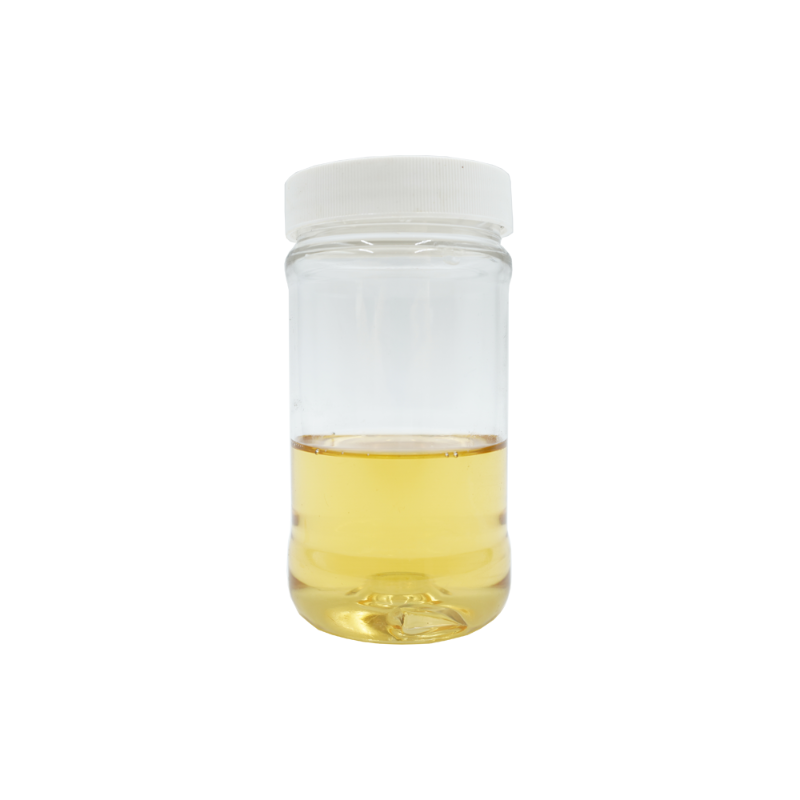-
Categories
-
Pharmaceutical Intermediates
-
Active Pharmaceutical Ingredients
-
Food Additives
- Industrial Coatings
- Agrochemicals
- Dyes and Pigments
- Surfactant
- Flavors and Fragrances
- Chemical Reagents
- Catalyst and Auxiliary
- Natural Products
- Inorganic Chemistry
-
Organic Chemistry
-
Biochemical Engineering
- Analytical Chemistry
- Cosmetic Ingredient
-
Pharmaceutical Intermediates
Promotion
ECHEMI Mall
Wholesale
Weekly Price
Exhibition
News
-
Trade Service
Keywords: castor oil; water-based polyurethane; thermal mechanical properties
Background: Water-based polyurethane (WPU) has become one of the most popular materials for researchers over the past decade due to increasingly stringent environmental regulations and concerns about human health. As an excellent alternative to solvent-based polyurethane (PUs), WPU has a wide range of advantages. Most importantly, because these polyurethane products use water as a dispersant, the WPU contains zero or low volatile organic compounds (VOCs), while solvent-based polyurethanes contain more than 600 g/L of VOC
. In addition, WPU avoids combustion or explosion during preparation, storage, transportation and coating, meeting the urgent requirements of safety and environmental protection. In addition, WPU also shows some excellent performance, such as flexibility, good strength, excellent wear resistance, so that it has been widely used in various fields.
recent years, the use of bio-based polyols in water-based polyurethane formulations to replace petroleum-based polyols, because of its environmental protection and versatility has attracted attention. Castor oil (CO) is a cheap, renewable raw material, has been widely used in coatings, sealants, adhesives, coatings and other fields. Although dmPA and DMBA have been used in many studies as hydrophobic monomers for the preparation of water-based polyurethanes, there is considerable uncertainty about the difference in performance between castor oil-based water-based polyurethanes and these two hydrophobic monomers, while emulsifying agent content also has a significant impact on the thermal and mechanical properties of polyurethane.
Haiyan Liang of South China Agricultural University, etc. used two hydrophobic monomers (DMPA and DMBA) to synthesize ricin oil-based water-based polyurethanes, and studied the ratio of OH groups in CO, NCO groups in IPDI, and OH groups in hydrophobic monomers (DBA) 1:1.7:0.69; 1:1.85:0.84; 1:2:0.99; 1:2.2:1.19) on performance. In the experiment, the stability was indicated by centrifuges and laser granularity meters, and the thermal mechanical properties of the coating film were studied by stretching electron omnally test machine, dynamic mechanical analyzer and thermal analyzer. The results of the study were published in Industrial Crops and Products.
the content of the
1. Preparation of castor oil-based anionic water-based polyurethane
Figure 1 shows the process of preparing anionic water-based polyurethane by castor oil. Add castor oil (6g), IPDI and DMPA (or DMBA) to a dry four-mouth flap and stir (130-170r/min) for 10 minutes at 78c to get a uniform mixture. Two drops of DBTDL are then added as catalysts. When the mixture is barely flowing, add MEK (30mL) to reduce the viscosity of the prejudging. After reaction 2h, cool the mixture to room temperature. Then add the TAA medium and the free nirfam in the polymer chain and stir for 30min. Finally, increase the stirring speed to 300r/min and scatter the polymer in 90mL water, stirring 2h. After removing MEK by rotating evaporation, a water-based polyurethane with a solid content of 10.6%-12.5% is obtained (Table 1).
Figure 1 prepares a synthetic route for castor oil-based water-based polyurethanes from DMPA or DMBA
see 1 composition of water-based polyurethanes
structitation and performance testing
the authors perform a series of symptoms and performance tests on the synthetic materials.
1, the effect of different hydrophobic monomers on the performance of water-based polyurethanes: figure
2 using the hydro-polyurethane appearance of different hydro-hydrophobic monomers: (a) DMPA (b)DMBA
Particle size distribution of hydroponic polyurethanes in monomers and different hydrophobic monomers: (a) water-based polyurethanes containing DMPA
; Compared to DMPA, DMBA prepares water-based polyurethane particle sizes (21∼44nm) and lower zeta-level absolute values (-32∼-47mV) (DMPA-synthetic polyurethane particle sizes and zeta levels are 134∼657nm and -53∼-60 mV, respectively). In addition, their particle size and zeta proton decrease with the increase of hydro-hydro monomor ratio. The study also found that the extrusion strength, Yang's modulus, fracture elongation, toughness, Tg, E' and water absorption rate obtained using DMBA were all higher than DMPA coating film, which was due to the larger DMBA side chain and higher crosslink density, resulting in lower molecular chain migration rate, but lower thermal stability and contact angle of DMBA coating film. This study provides a new way for the synthetic performance adjustable water-based polyurethane, which has a wide range of applications in coatings, inks, leather and other fields.
:
Liang H, Wang S, He H, et al. Aqueous anionic polyurethane dispersions from castor oil[J]. Industrial Crops and Products, 2018,122:182-189.
。






